Corrugated paper number
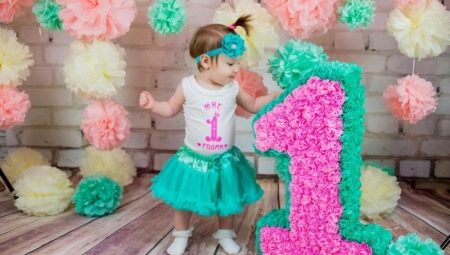
Colored flat and volumetric birthday numbers are one of the ways to create a festive atmosphere for your baby. The number for an older child may turn out to be two-digit. The same attribute is used by corporate employees, for example, celebrating the 20th anniversary of their company.
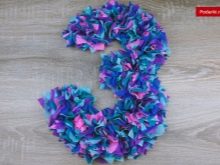
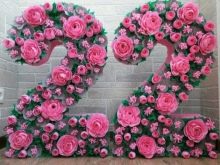
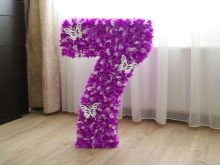
What will it take to work?
Corrugated paper, which is indispensable when creating numbers, is made using uniform transverse or longitudinal bending from an ordinary colored sheet blank. In addition to this material, for volumetric figures, cardboard or trimmings from any building materials, for example, pieces of defective drywall, are required.
Plastic, also found among all kinds of construction junk that has not yet been thrown into the trash, will also work as an alternative, as well as a swollen chipboard that has begun to crumble from moisture.
Make sure that the materials from which the base for volumetric figures is made are not susceptible to mold or fungus: contact with such consumables is dangerous for a person.
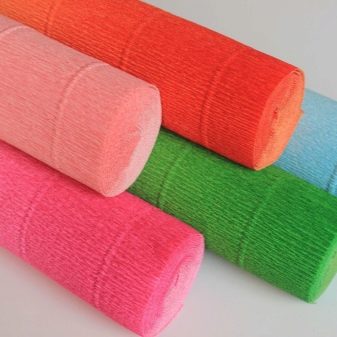
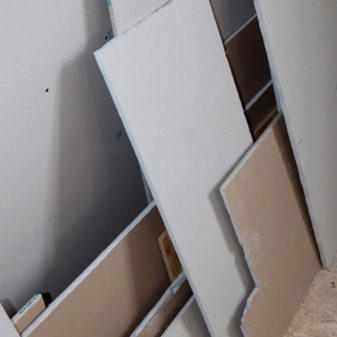
Corrugated paper should not contain dyes that are toxic to children and adolescents, as well as the main - thicker and harder - blanks should not evaporate harmful compounds formed from decomposing plastic and adhesives. Check all materials for safety.
For gluing paper, ordinary glue prepared on the basis of a completely safe starch paste is suitable. Epoxy or wood glue may be required to bond the plastic - it is also suitable for working with wood (saw) materials, composite.
In principle, the basis for the numbers can be made from sheet steel and from professional steel.But this method is not used for a one-time home celebration on the occasion of someone's anniversary, but, rather, for the constantly present structures. For example, as a component of the sign of the cafe "12 chairs".
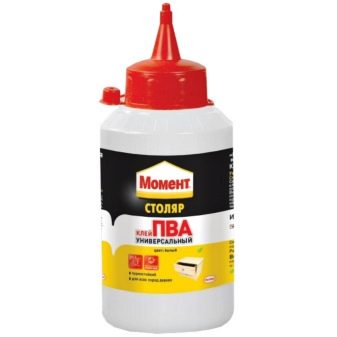
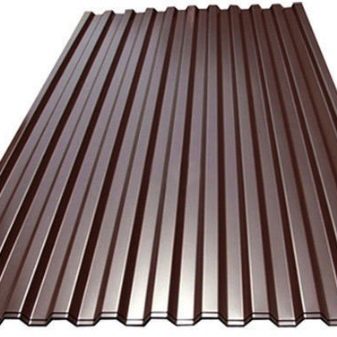
For paper cutting tools, simple scissors are required. A pencil is used to mark strips and sheets, but you can use, for example, a red felt-tip pen for pink paper. A sharp contrast of colors, for example, black and green, is unacceptable when marking: The lines are visible and can ruin the look of your craft.
If you use plastic or wood instead of cardboard, you may need, for example, a grinder with a saw blade for wood. Cardboard, by the way, is also cut with ordinary scissors.
If you are not yet going to teach your child the first lessons on working with carpentry and locksmiths, as well as power tools (it is still too small for such work), making numbers will be limited to simple cutting out paper and cardboard.
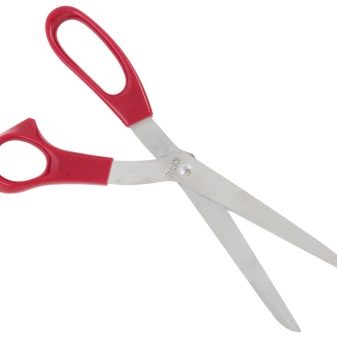
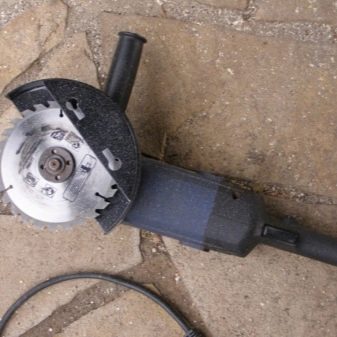
How to make a figure?
The creation of the number 1 is easy. As follows from the outline, the shape of such a blank, even a 5–6-year-old child can cope with this work. "Winding" numbers (like 3, 6, 9, 2, 5) are a little more difficult to make. The most difficult to form is the number 8, a little easier - 0.
The numbers 4, 6, 8, 9, 0 are closed: it is not easy to pierce the paper and cardboard with scissors from the inside; you will need to make an incision with a clerical knife in one of the corners of the number 4 or at one of the points of the numbers 6, 8, 9, and 0.
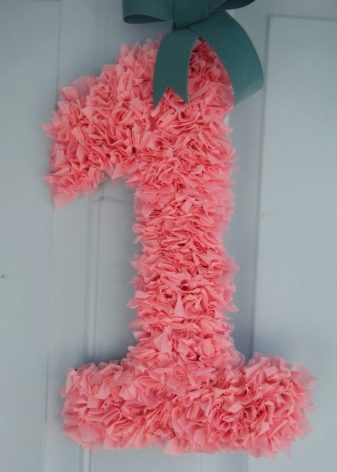
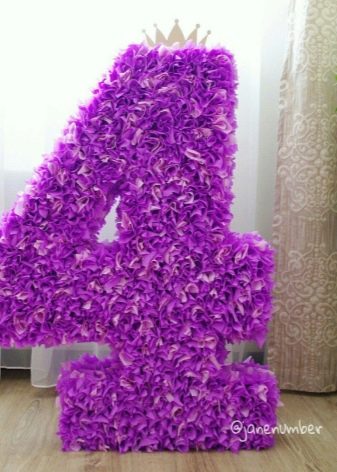
It will be interesting to create layouts of numbers, where numbers are written in Roman. Making 12 - XII, a cross and two sticks is quite simple: the Arabic notation is a sign that does not fit into any alphabetic alphabet. Roman numerals are written in Latin letters. And if cutting out the signs of the number 20, for example, seems to be a simple matter, then making an inscription, say, "Happy new year 2022", is a more painstaking task, since you also have to cut letters in the words "s", "new" and "year".
It is not so difficult to cut out the numbers themselves in any quantity - the difference between the year of the calendar and the age from the date of birth is only in the number of operations performed. Someone may find it easier to make a model MMXXII than "2022": by the way, this is the same number, while three Latin letters are repeated once. However, three twos in the number 2022 are cut out at the same time - so as not to re-measure pieces of cardboard and sheets of paper three times. With his own hands, an adult can make a mock-up inscription and one - and decorate the resulting elements together with the children.
The latter will prefer working with decorations, although they are taught to do crafts, starting with simple actions, gradually moving on to solving more complex problems. You can use any of the thousands of master classes to stage the scenery.
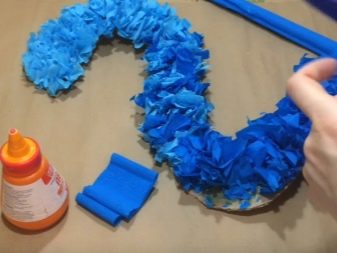
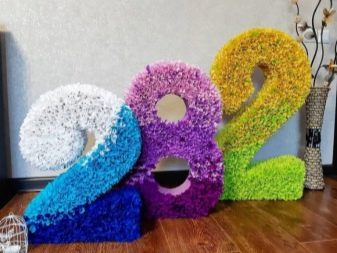
Flat
To make a flat number, do the following:
- referring to a drawing or sketch taken from the Internet or drawn up independently, draw (mark) a sheet of cardboard;
- cut the workpiece along the lines you have drawn.
The digit is ready - in draft form.
Next, to decorate it, do the following.
- Mark the paper of a color of your choice, such as blue, in a periodic outline. In the simplest case, it is enough to draw parallel, equidistant lines from each other.
- Bend it along these lines. The result is an "accordion".
Paste the figure with the resulting "accordion". Repeat the same steps with other blank numbers.
To make a flat number from squares, you will need to cut the cardboard into equal fragments, for example 10 * 10 cm. But similar parts can be glued from other waste obtained when cutting out the previous ones.
The decoration created on flat figures completely hides their principle of construction under its own layer - it does not matter whether it is a solid figure or glued from pieces.
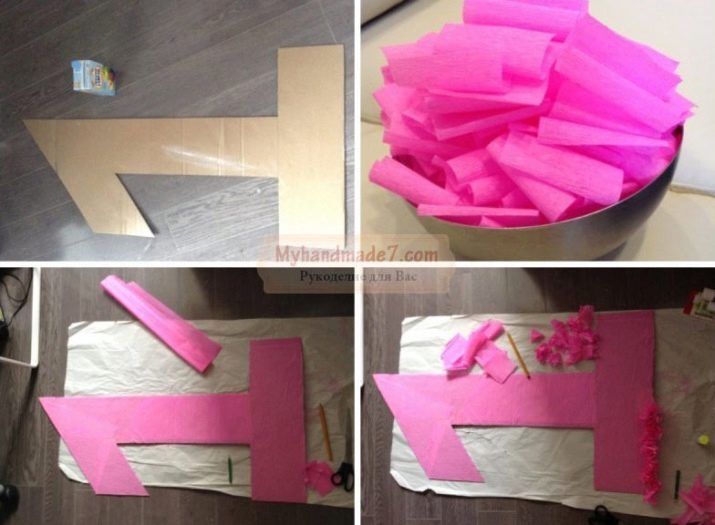
Volumetric
To make a volumetric (three-dimensional) figure, you will need to cut, according to the drawing, in three projections.Projections of each type allow you to restore a three-dimensional image. In drawing practice, a species image made up of types of different projections is called a diagram. In order not to complicate the construction of the same numbers too much, you can use a hand-drawn sketch. For example, to create a Roman unit, an image of a long, upright parallelepiped with a size, for example, 1 * 0.1 * 0.1 m, transferred to a sketch or drawing on a reduced scale, is suitable.
For the manufacture of Arabic numerals in the form of figures, you can use a compass and a template. An oval (pattern) will be required for elongated numbers: 3, 6, 8, 9 and 0, along which primary lines are drawn first, outlining the general outline. Then, using a protractor and a compass, an additional outline is created, say, under the number 8.
For volumetric figures, you can also use a drawing of flat ones, transferring them to a plate of thick material, for example: foam or wood.
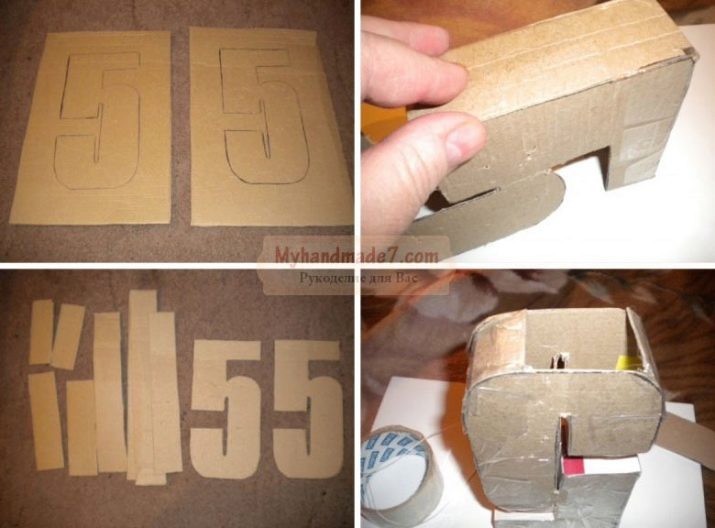
To create a figure in the form of the number "1", a bar will fit; it will remain to attach a "bow" part made of a different material to it. The number "4" is obtained from three sticks or bars, sawn in such a way that the same number does not look too stretched, unnaturally wide. But the number "7" may require the formation of the lower crossbar with rounded outlines - in fact, it is a curve, which in the simplest case is replaced by a straight crossbar. The processing of this part is possible taking into account the curved refinement.
Computer modeling of curves takes a special place in the formation of sketches and drawings of numbers and letters. Achieved the creation of such masterpieces, for example, in the vector editor CorelDraw. Images generated by the WordArt software tool are also used., which was introduced back in Microsoft Word 97/2000. The most experienced users also use the Adobe Photoshop software toolkit.
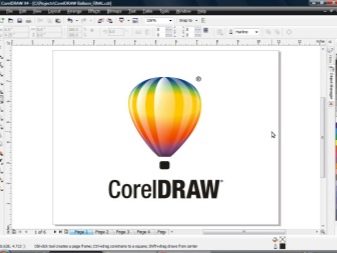
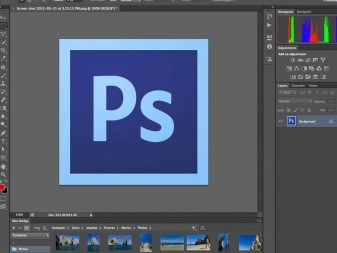
A child or teenager who is engaged in modeling more and more complex figures will truly appreciate and join the "advanced" developments that can be used by older family members.
So, having drawn or sketched the outlines of the numbers, comparing them with the dimensions obtained, the edges of these figures are cut out of the cardboard. Their further assembly will not seem too difficult. If you don't have enough experience in constructing the figures of Arabic numerals, you can try with Roman ones. Mastering Arabic and Roman symbols, the child will discover an additional opportunity in learning to read not only in Russian, but also in foreign languages using Latin letters: he will already know some of them.
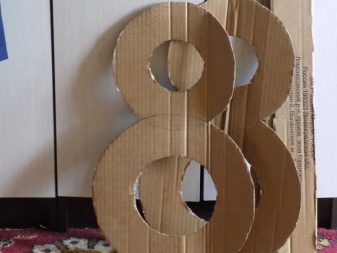
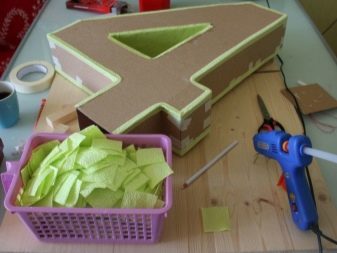
How can you decorate?
Three-dimensional and flat numbers are decorated with artificial flowers made of the same colored paper in accordance with the origami technique. Techniques for performing decorations in a similar style do not apply only to images of flowers - you can paste over the numbers with asterisks with any number of ends. It does not matter whether a 5- or 8-pointed star is used: the design is chosen by the child himself, and step by step it is done jointly (with the older family members).
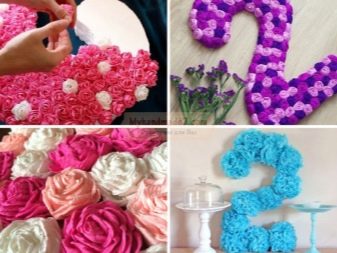
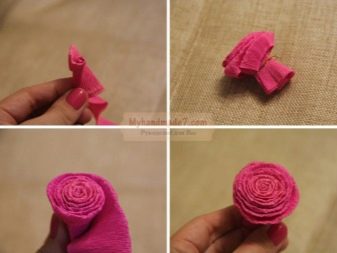
The option with flowers will appeal to a girl, with stars or other figures - to a boy... Almost any solution can be used for a birthday. For example, to decorate a room in honor of the girl's 7th anniversary from the date of birth, an ornament of a short and a long rose, located respectively along the guides of the number “7”, is used. You can fill the figure both over the entire area facing the observer, and partially, especially when the figure itself looks decent without decorations: it can already be pasted over with ordinary decorative material. For example, pink paper is paired with artificial red rose buds.
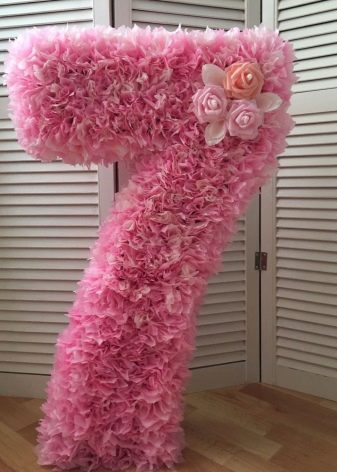
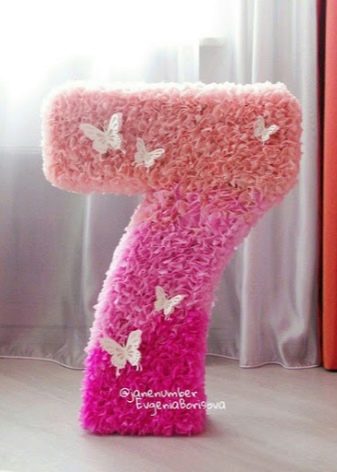
Beautiful examples
If the digit is covered entirely, then a worthy option for the number "2" would be, for example, bright yellow lace, decorated in the form of a kind of floral matrix with a somewhat heterogeneous texture.However, a truly uniform arrangement of small elements is only possible for craftsmen, whose monotonous, albeit in large quantities, elements are put on a wide stream.
But a real artist each time makes a new work (order) a little differently, in accordance with the wishes of the customer.
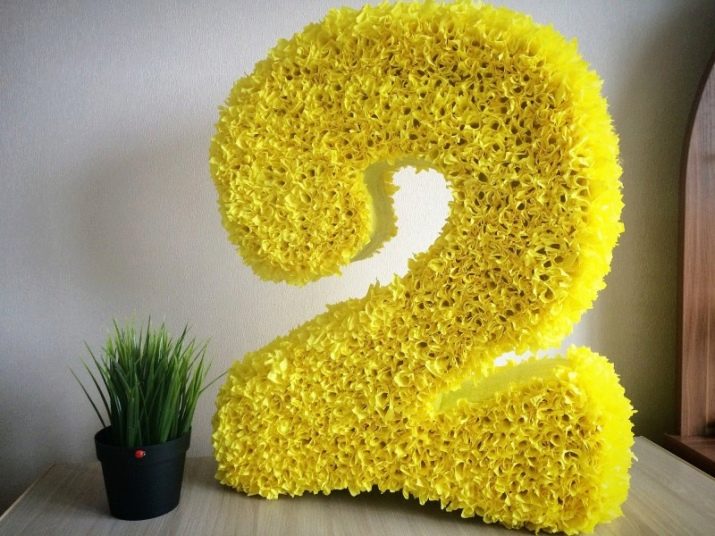
But volumetric figures are used not only as an attribute of children's parties. So, the number "30" can denote, for example, a wedding anniversary, the birthday of a beloved woman; in the latter case, the three-dimensional image of the number can be decorated with roses.
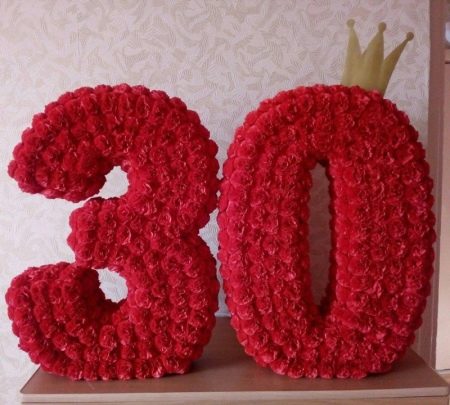
If it’s not someone’s anniversary, but, say, the celebration of May 9, then for Victory Day you can use the decoration of the number “9” with the same roses. Such attributes are made in the form of a volumetric applique and are placed, for example, near the Eternal Flame in one of the city or village parks, and the word "May" can be cut out or drawn on a plate next to the number. The idea of roses can be replaced with red stars and St. George's ribbons: this is how, for example, the numbers indicating the period of the Great Patriotic War (1941-1945) are decorated.
At the same time, the symbols themselves in these numbers are finished in order, since they do not constitute a single whole, but individual figures.
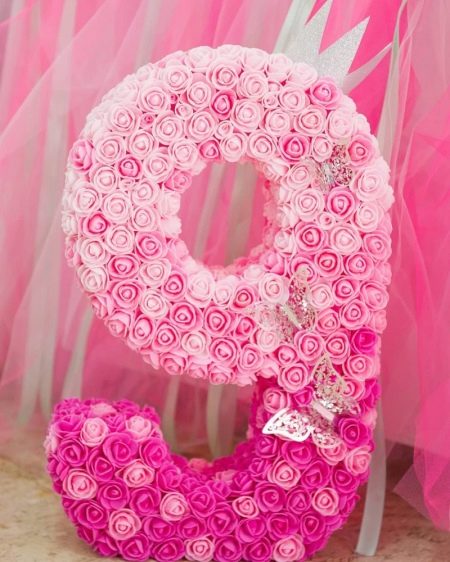
For information on how to make a figure out of corrugated paper, see the next video.







